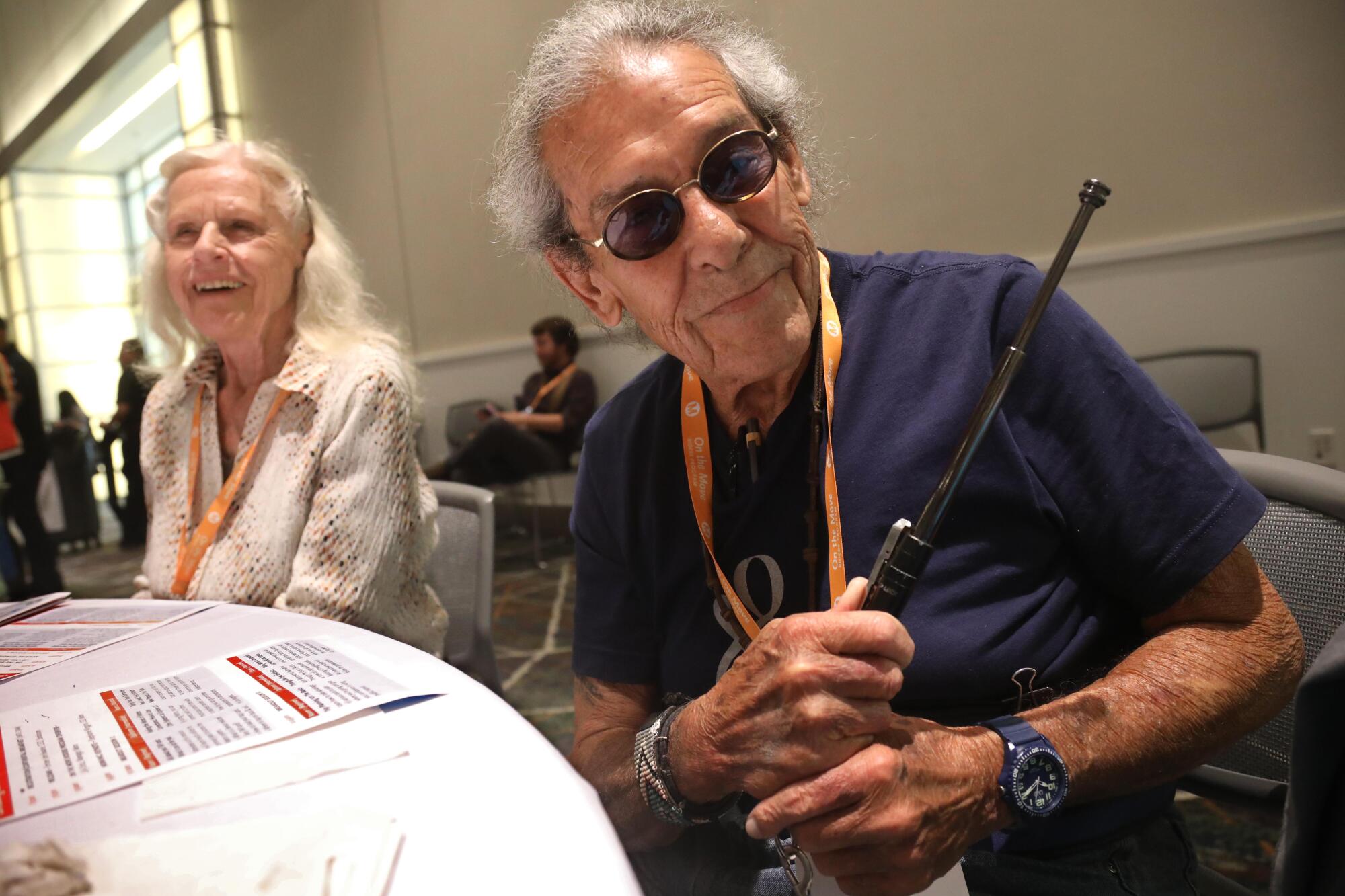
- Share via
Retired teacher Will Fernandez of Monrovia has a vehicle, but prefers to get around on his e-bike, buses and trains. For his wallet, and the environment, “that’s really the way to do it,” he said.
But the 63-year-old has a concern shared by many transit riders I spoke to Tuesday at Metro’s Older Adult Transportation Expo in Pasadena, an annual event aimed at promoting ridership and educating people on how to get the most out of Metro.
“I’m frightened,” he said, given the recent glut of stories about violence on riders and drivers, and given disturbing scenes he’s witnessed himself.
“I’ve lived in L.A. all my life, and I’ve never seen the level of violence that I’m seeing now,” Fernandez said. “It’s like an insane asylum. I’ve seen people defecate on the train. I’ve seen people pull knives on the train, and it has definitely upped my level of awareness.”
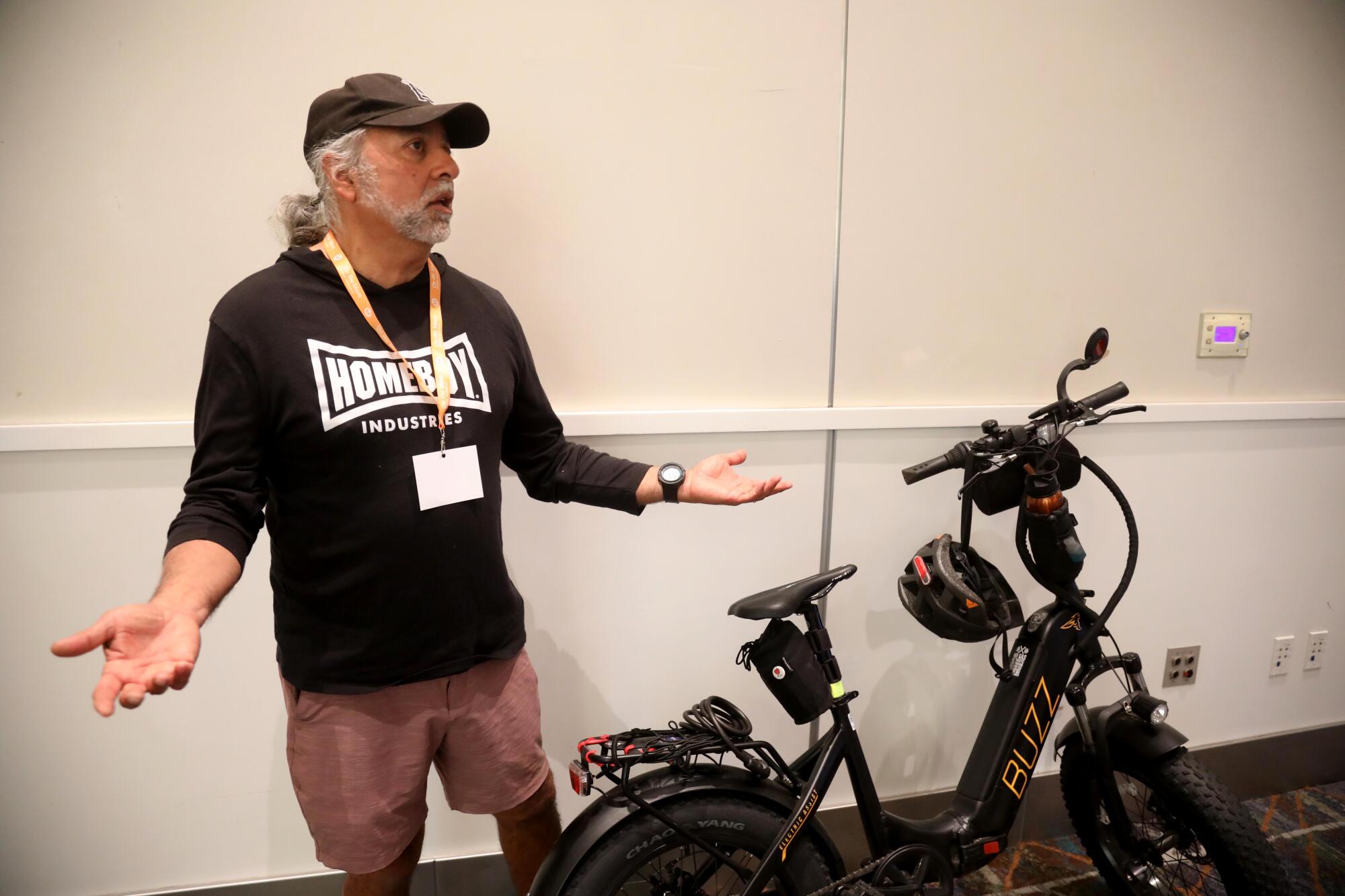
Fernandez said there are too many fare-jumpers, which heightens the sense of disorder and risk, and he tries to look the part of a tough guy while commuting, in hopes of discouraging attacks. He walked over to his e-bike, which was parked against a wall at the Pasadena Convention Center, to make his point.
“This is my bike lock, just in case,” he said, grabbing the steel cable. “I’m ready to take care of business, as a defense mechanism, because it’s gotten to the point where you have to take some responsibility for your own safety.”
California is about to be hit by an aging population wave, and Steve Lopez is riding it. His column focuses on the blessings and burdens of advancing age — and how some folks are challenging the stigma associated with older adults.
It’s hard to quibble with Fernandez’s take, given the acts of violence and all the social and behavioral problems that are evident. The Metro board recently approved an emergency procurement to rush installation of protective barriers for bus operators due to the increased severity of assaults. Board member Kathryn Barger, who said she’s afraid to ride transit alone, joined colleagues who introduced a motion to step up security and explore future options.
In the keynote address at the Expo event in Pasadena, Metro Chief Executive Stephanie Wiggins briefly hit the highlights of service expansion and increased ridership on some lines, and she repeated the grand vision of Metro as both a commuter service and an affordable way to “explore, discover and connect with our communities.” But she quickly pivoted.
Safety, Wiggins said, is “the most important thing we’ve been working on,” for the benefit of Metro riders and employees. And she called for a moment of silence in memory of Mirna Soza Arauz, the 67-year-old Tommy’s security guard who was stabbed to death on a B-Line train between the North Hollywood and Universal stations shortly before 5 a.m. on April 22.
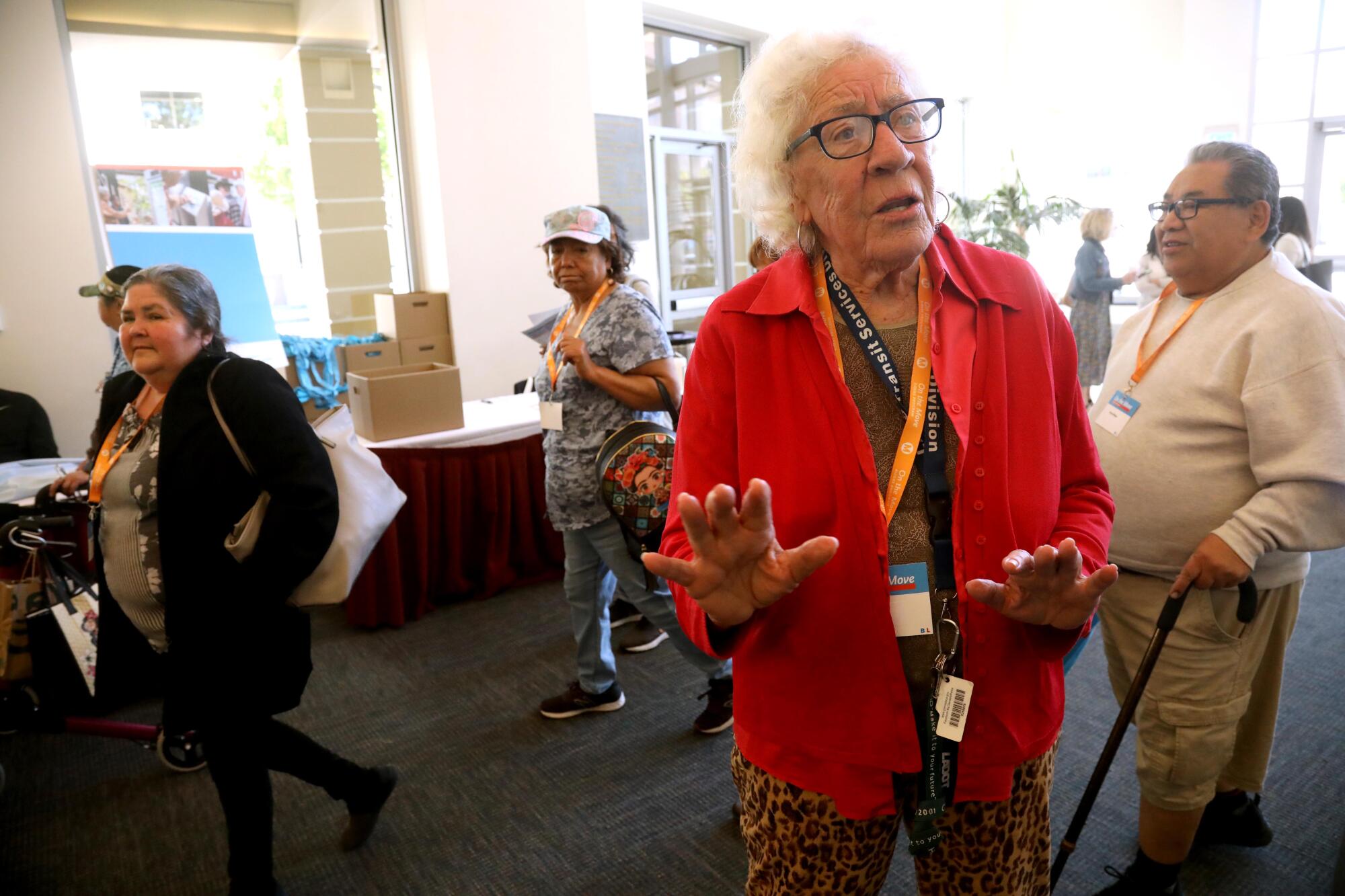
After I retraced her final route, riding the same train Soza Arauz had ridden, a week after her death, I wrote in my column that tighter security is obviously needed, but it’s unrealistic to think Metro can clean up all the societal failures that have turned buses and trains into rolling shelters. Wiggins hit that same note in her speech, referencing homelessness, untreated mental illness and a drug epidemic.
“We didn’t create any of these problems, but we need to manage them,” Wiggins said.
She told the audience that the number of Metro’s homeless outreach teams had been tripled from eight to 24, and that more lighting and security cameras have been added, along with more security officers “to enforce our code of conduct including fare enforcement.”
Also, Wiggins said, 300 Metro ambassadors have been posted throughout the system to answer questions and spot problems, and crime stats in March showed a double-digit decrease year-to-year. In fact, overall crime rates on buses and trains have both risen and fallen at various times in the past few years, depending on the crime category, although recent high-profile violent crimes have fueled fear that Metro is unsafe.
As Wiggins spoke, another all-too-familiar drama was unfolding at the Sunset/Vermont Metro station in Hollywood, where a security guard got into an altercation Tuesday morning with a knife-wielding trespasser discovered during a sweep of a nonpublic area of the station. Authorities said the guard was stabbed and then shot the attacker, who fled to a nearby hospital and was pronounced dead.
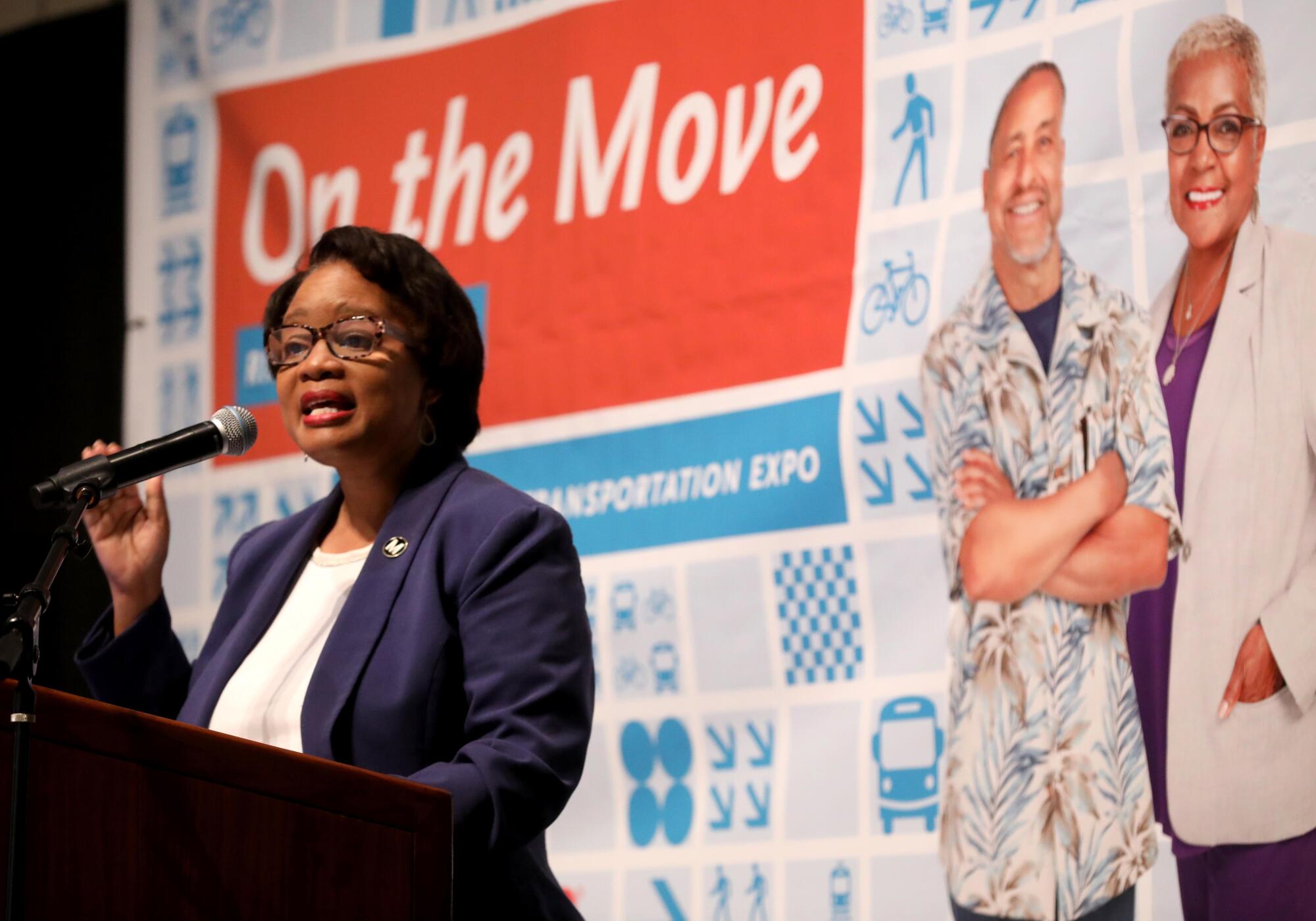
For all of this, not everyone who attended the Pasadena Expo was ready to give up on transit. Two women in their 70s, from Lancaster, told me they travel in groups and are aware of risks but feel generally safe.
Retiree Frank McGrath, 75, said he intends to keep riding.
“I’m aware of my surroundings,” he said, adding that he’s prepared to use his walker to defend himself if necessary.
Wanda Savage, 60, said she won’t use transit at night, but she sticks to a set of personal rules when riding during the day. She stands instead of sits, she said, and is prepared to run if necessary.
“You just have to be very aware,” she said. “That’s why I don’t use earbuds and headsets and all that stuff. I hear everything.”
Duane Garcia, a 75-year-old musician who told me he served in Vietnam as a Marine, carries a telescopic baton and a pocket knife at all times. He said there ought to be more supervision on platforms because he’s seen pickpockets target people, and he’s seen “predatory behavior,” particularly against women.
Stan Slonkosky, 72, a retired electronic technician who can’t drive because of poor vision, told me that riding public transit almost got him killed.
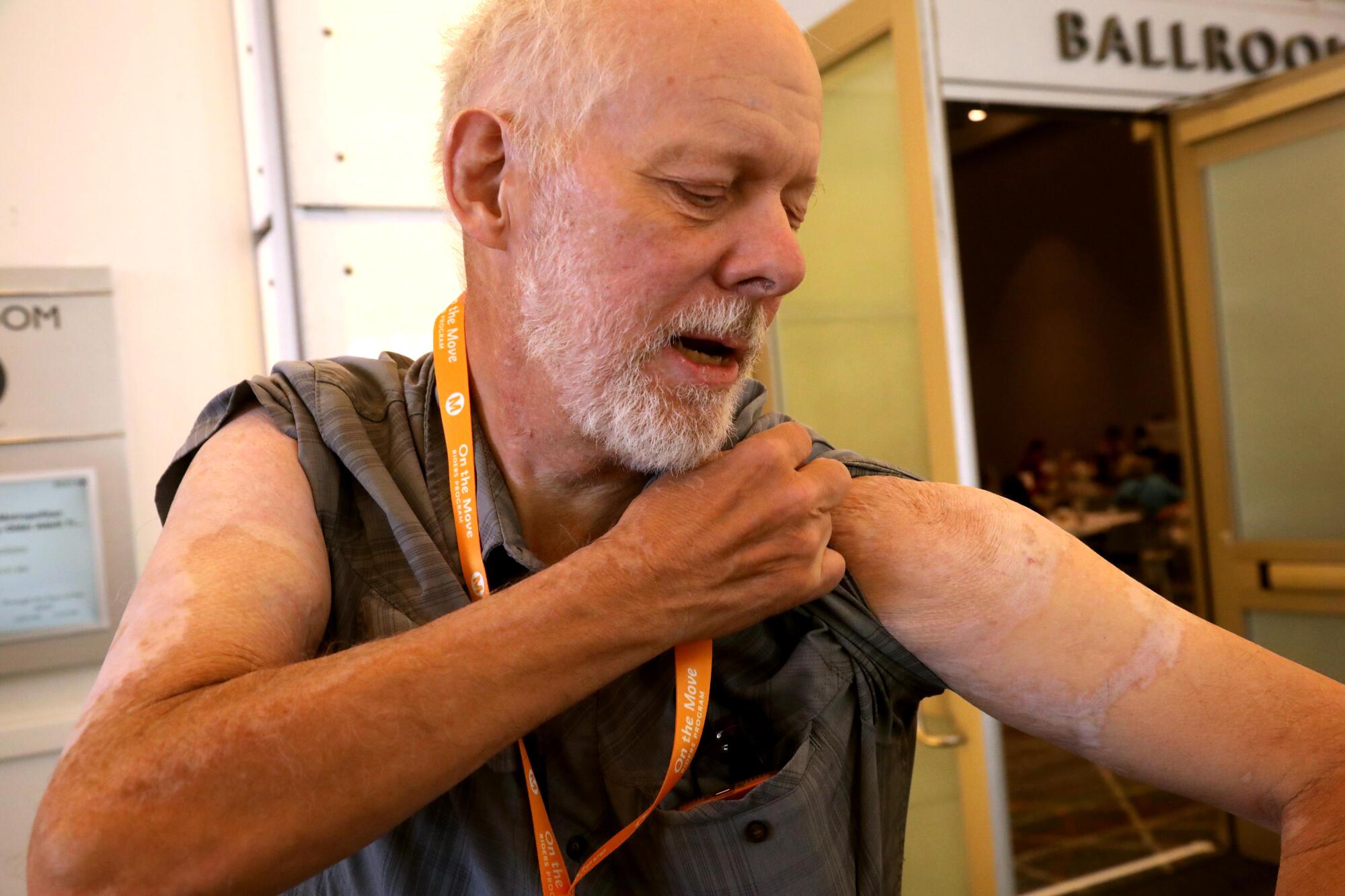
“Two years ago today, I attended a concert at St. Andrews Church in Pasadena,” he said. After it’s conclusion he walked to the Memorial Park metro station a few blocks away that evening to head home.
“When I got on the train,” Slonkosky said, “a woman behind me said, ‘You’re blocking my view.’ I ignored her because I thought she was crazy, and she sprayed a liquid on me. I thought it was water because it was odorless, but according to a detective who investigated it, it was gasoline, and she set me on fire. I got on the floor and put it out. Some of the other passengers helped me.”
Slonkosky said he suffered second-degree burns on his arms, and he showed me the scars. He was also burned on his torso and face, and spent seven weeks in the hospital followed by three months in a nursing home. He said his assailant was declared mentally unfit for trial, and has yet to be prosecuted.
Slonkosky said too many people with violent histories don’t face consequences and are left free to attack again, and he thinks there ought to be many more uniformed officers patrolling Metro. He went to the Expo to ask Metro officials why security is so lax, but there was no opportunity for such an exchange.
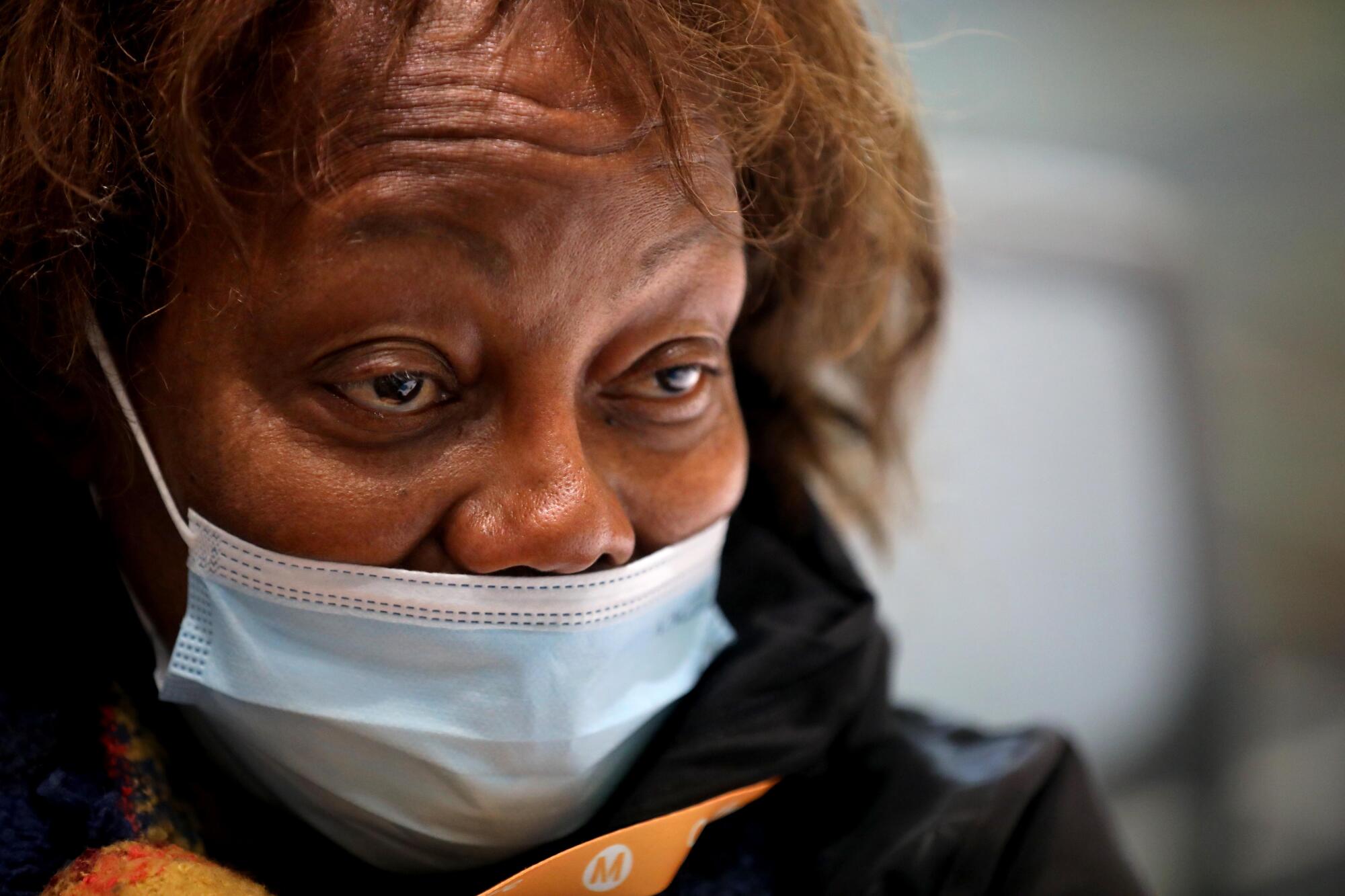
Wiggins later told me that Metro isn’t the only large transit agency dealing with these issues, and as a rider she has seen the risks described by others. “I’ve had that experience where someone…appears to be having a mental crisis,” she said.
And for all the attempts thus far to improve security, she said, “I want to be clear that I’m not satisfied and I know there’s still more to be done.”
A lot more. Last year saw an astounding 168 assaults on bus drivers, some of who staged a sick-out last week.
We’ve plowed billions into transit, with good reason, but we’re not seeing enough of a return on the investment.
Metro helps drive the local economy and has the potential to get people out of their cars in a traffic-choked metropolis. It gets people to work and to school, and many of them have no transportation alternatives. And transit is more important than ever, given the impact of car culture on climate change.
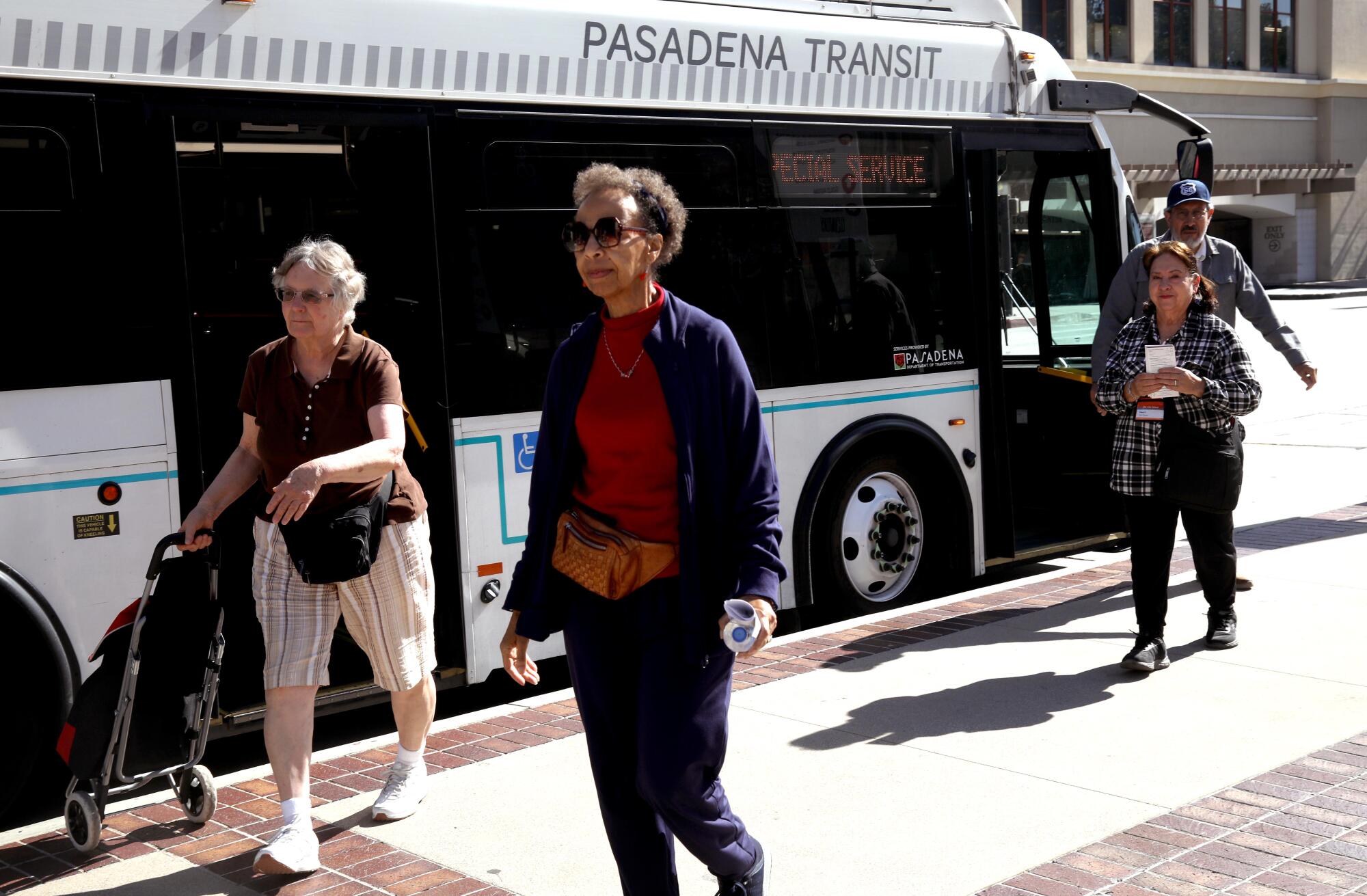
The great cities of the world have great systems, and they figure out how to make them work — safely and efficiently — for people of all ages.
Los Angeles has to do the same, no more excuses.
More to Read
Sign up for Essential California
The most important California stories and recommendations in your inbox every morning.
You may occasionally receive promotional content from the Los Angeles Times.












